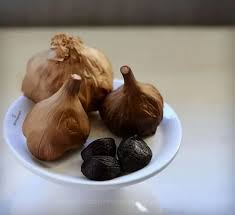Editor: KYNPHAM SIONG NONGKYNRIH and RIMI NATH
Publisher: PENGUIN BOOKS
Genre: Contemporary Fiction
Book buy link: @Amazon
Edited by Kynpham Siong Nongkynrih and Rimi Nath, Lapbah
– Volume I, a collection of stories from the North-East, is a charming
anthology that is both uplifting and deeply moving. It is an encouraging and
heartwarming read. Bringing together fifty-seven wonderful stories from
fifty-two writers, the volume delivers timeless inspiration and emotional
resonance that readers will love and cherish. This collection invites readers
to pause for a few reflective moments, allowing them to reconnect with the
goodness, culture, and traditions of the world.
The stories in this volume, connected by an intricate
web of themes and sensibilities—delicate as a spider’s silk—draw from the eight
North-Eastern states: Arunachal Pradesh, Assam, Manipur, Meghalaya, Mizoram,
Nagaland, Sikkim, and Tripura. They offer readers a rare feast: a kaleidoscopic
fiesta that captivates with its magical richness and stunning variety.
The authors vividly portray the natural beauty of the
North-East—the ever-raining clouds, thundering skies, challenging rivers,
overflowing reservoirs—and intricately weave them with indigenous traditions,
customs, and cultural expressions. Each story carries a special message,
leaving the reader mesmerized by their dazzling variety and compelling appeal.
What makes these stories particularly unique is their
ability to convey the characteristic features of North-Eastern literature. The
region, lying at the bio-geographic frontier—where Indic, Sinic, and Malaysian-Burmese
influences meet—has produced a remarkable treasure trove of flora, fauna, and
avian biodiversity. These influences are richly mirrored in the literary works.
Laburnum for My Head by Temsula Ao is narrated in the
first person by an elderly Naga woman who harbors a simple but unusual wish:
she wants a laburnum tree to be planted on her grave after her death. Though
she dies before seeing it bloom, her children fulfill her quiet desire by
burying her beneath the tree. The story subtly meditates on death and memory.
The Sanskrit phrase "यथा
यथा
हि
पुरुषः
चिन्तयति
तथा
तथा
स
भवति।"
(Source: Chāndogya Upaniṣad 3.14.1) meaning “As a person thinks, so he becomes”—aptly
reflects the woman’s inward transformation. Her wish to plant a sapling becomes
a symbol of peaceful acceptance and continuity.
The Manuscript is a metafictional narrative that
explores the blurred lines between reality and imagination, creator and
character. The writer’s imagined thoughts begin to take on a life of their own.
The phrase "मनसो
हि
गतिर्नाम
न
ज्ञेया
केनचित्
क्वचित्।"
(Source: Mahābhārata) meaning “Truly, the movement of the mind is unfathomable
by anyone, anywhere”—encapsulates the wild, unpredictable course of the
writer’s imagination where fictional characters defy even their creator.
In Falling by Jahnavi Barua, the protagonist Maya
falls in love with John Wallang, unaware of the challenges ahead.
The Mahābhārata says:
"न हि
मन्यसे
कृतं
तत्सर्वं
भवति
यथाविधि।"
(Śānti Parva) — “What one intends does not always happen as planned.”
and
"दैवमेव हि
सर्वत्र
कारणं
नात्र
संशयः।"
— “Fate alone is the cause of everything—of this, there is no doubt.”
These verses mirror the core of the story: while human
effort is vital, fate often has the final say.
Momos by Ashim Basnet contains a cautionary message
about thoughtless action, conveyed through the character Hari, a momo-seller.
The Sanskrit subhāṣita:
"यस्य नास्ति
स्वयं
प्रज्ञा
शास्त्रं
तस्य
करोति
किम्।
लोचनाभ्यां
विहीनस्य
दर्शनं
किं
करिष्यति॥"
— “Of what use is scripture to one who lacks intelligence? What use is sight to
one who has no eyes?”
This reminds us that wisdom is not in knowledge alone,
but in one’s ability to comprehend and apply it. Hari’s actions are a poignant
reflection of the consequences of lacking inner wisdom.
Haflong Hills features Minati, a character who
exemplifies bravery. Her courage earns her admiration, grace, and success,
especially during crises.
Several Sanskrit proverbs resonate here:
"धैर्यं सर्वत्र
साधनम्।"
(Pañcatantra) — “Courage is the means to everything.”
"उत्साहो बलवान्
आर्य
न
अस्ति
उत्साहात्
परं
बलम्।"
(Rāmāyaṇa, Yuddha Kāṇḍa 36.19) — “Enthusiasm and courage are true strength;
there is no greater power.”
"साहसे श्रीः
प्रतिष्ठिता।"
(Subhāṣita-ratna-bhāṇḍāgāram) — “Fortune abides in courage.”
Koinar Mūlya: An excerpt by Lummer Dai
In a conversation between Kargum and his wife Yabam
about their daughter Gumba, Kargum says, “She must be sent away to her owner
(husband) right away.” This thought is echoed in the classical Sanskrit
worldview expressed in:
"अर्थो हि
कन्या
परकीय
एव।"
— “For indeed, a daughter belongs to another.”
This line, found in classical Sanskrit drama, reflects the traditional
perspective on a daughter’s marital transition, though modern sensibilities may
differ.
Like these, many gems lie hidden within this
anthology. It showcases that while anybody may write something, only somebody
can write everything. Altogether, it affirms:
"यदिहास्ति
तदन्यत्र,
यन्नेहास्ति
न
तत्कचित्।"
(Mahābhārata) — “Whatever exists in the world can be found here; what is not
here exists nowhere.”
This collection truly becomes the apple of the
reader’s eye, celebrating the spirit, landscape, and literature of North-East
India.
(This blog post is a part of Blogchatter's Book Review Program:
https://www.theblogchatter.com/book-review-program-from-blogchatter)














